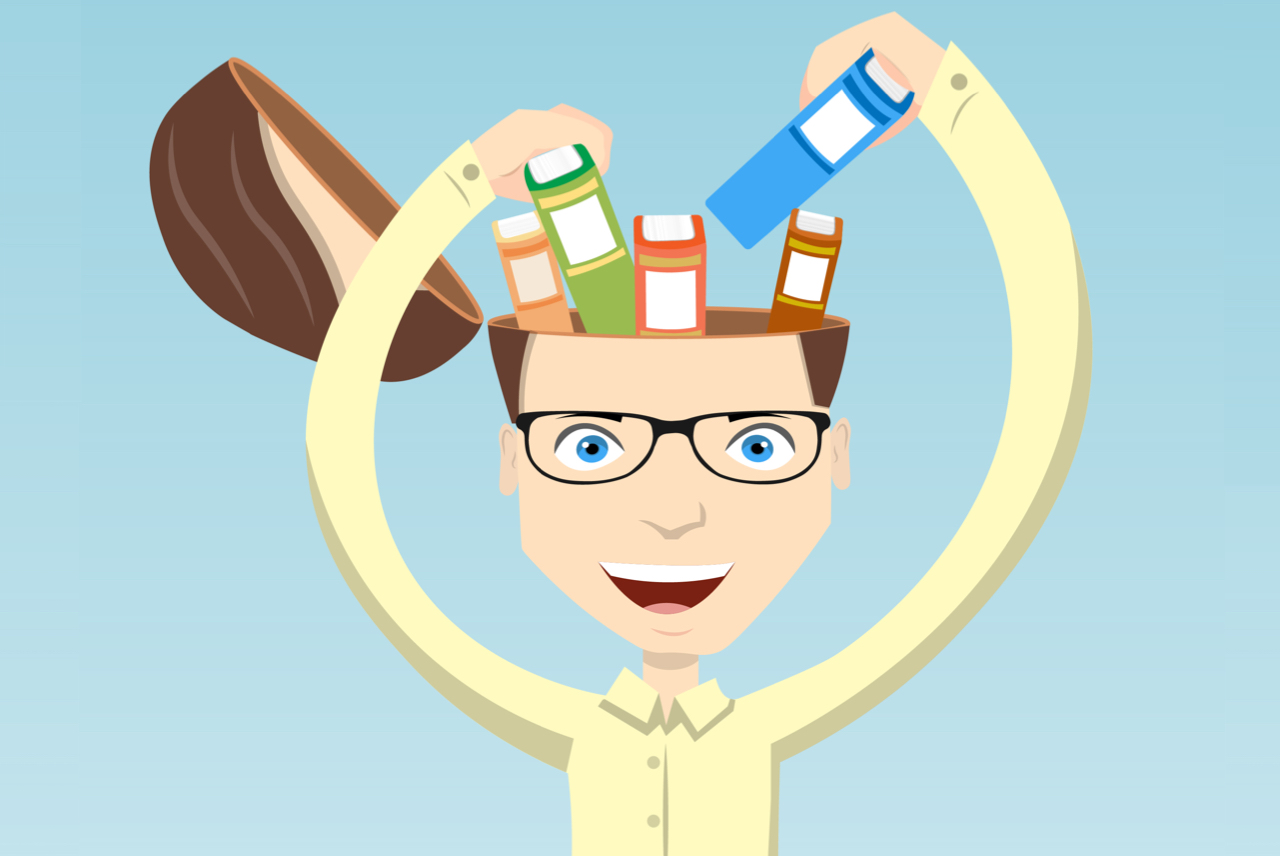Whether you need to study a test, or find your keys (because you woke up late for class), you need a good memory. So, how exactly does memory work, and is there a way you can improve yours?
In the simplest terms, memorizing involves the gathering, storing, recollecting, and later, retrieving information.
There are three major processes involved in memory:
Encoding: To create new memories, information must be changed into a usable form, which happens through encoding.
Storage:When the information has been successfully encoded, it must be stored in memory for later use. Usually much of the stored memory lies outside of your awareness; except when you actually need to use it.
Retrieval: The retrieval process allows you to bring stored memories into your conscious awareness.
Improve your memory with these 3 techniques
Visualization:
According to a study, when you’re trying to remember something like a shopping list, you need to visualise each item vividly in a place you know well, like your living room or kitchen. Adding a bizarre, and intense action to the visualization, helps your brain to memorize it with ease.
Example: Let’s say you need to buy eggs; imagine a hen laying eggs on your coffee table. If you’re out of orange juice, you might picture it splattered up on the wall. This technique is favoured by top memory athletes in the world and is proven to work.
Anyone can use the technique to improve their memory and as a result, reshape your brain.
Loci:
Loci, which means location or place, is an effective mnemonic device(memory technique) that helps memory storage and retrieval. This method relies on visualising mental images to link with the material that needs to be remembered. Creating a vivid mental picture helps the mnemonic become clear and solid in your mind. Rehearsing the link between the location and the material that needs to be memorised adds to the mnemonic’s effectiveness.
It’s based on the assumption that you can best remember places that you are familiar with, so if you can link something you need to remember with a place that you know very well, the location will serve as a clue to help you remember. Imagine walking through campus or your house and certain parts of it will be linked to parts of your speech. So, as you mentally walk through your chosen place, you recall the information.
Example: If we apply this to the grocery-list, you may imagine your living room filled with orange juice, drenching all the couches, sticking against the wall, and then imagine eggs spilling out of the fridge in the kitchen, filling the whole kitchen with gooey yolk.
Chunking:
This method involves creating random bits of information into something meaningful and memorable. If you need to remember a list of things like buying bananas, eggs, apples and roses, you can create a word out of the first letters (e.g. “BEAR”), which is easier to remember than the individual items. It also helps that BEAR is visual, and an easy-to-remember word. You could imagine the bear running through the glass door of the grocery-store, using the visualization technique from earlier to anchor the mnemonic at the store.
If you’ve ever tried to remember a phone number by making a word (or words) out of the letters on the phone’s dial pad, you’ve already used chunking.Chunking isn’t just a memory technique; it’s a form of human creativity, and a great way to boost brain functions.
References
- https://lifehacker.com/top-10-tricks-to-boost-your-memory-and-remember-anythin-1748770380
- https://www.verywellmind.com/what-is-memory-2795006
- https://www.independent.co.uk/life-style/how-remember-anything-memory-palace-trick-tips-guide-not-forget-a8224921.html
- https://www.cell.com/neuron/fulltext/S0896-6273(17)30087-9
- https://lifehacker.com/5946606/improve-your-memory-with-the-chunking-technique
- https://www.entrepreneur.com/article/314570
- https://www.psychologytoday.com/us/blog/the-psychology-dress/201111/visualize-it

